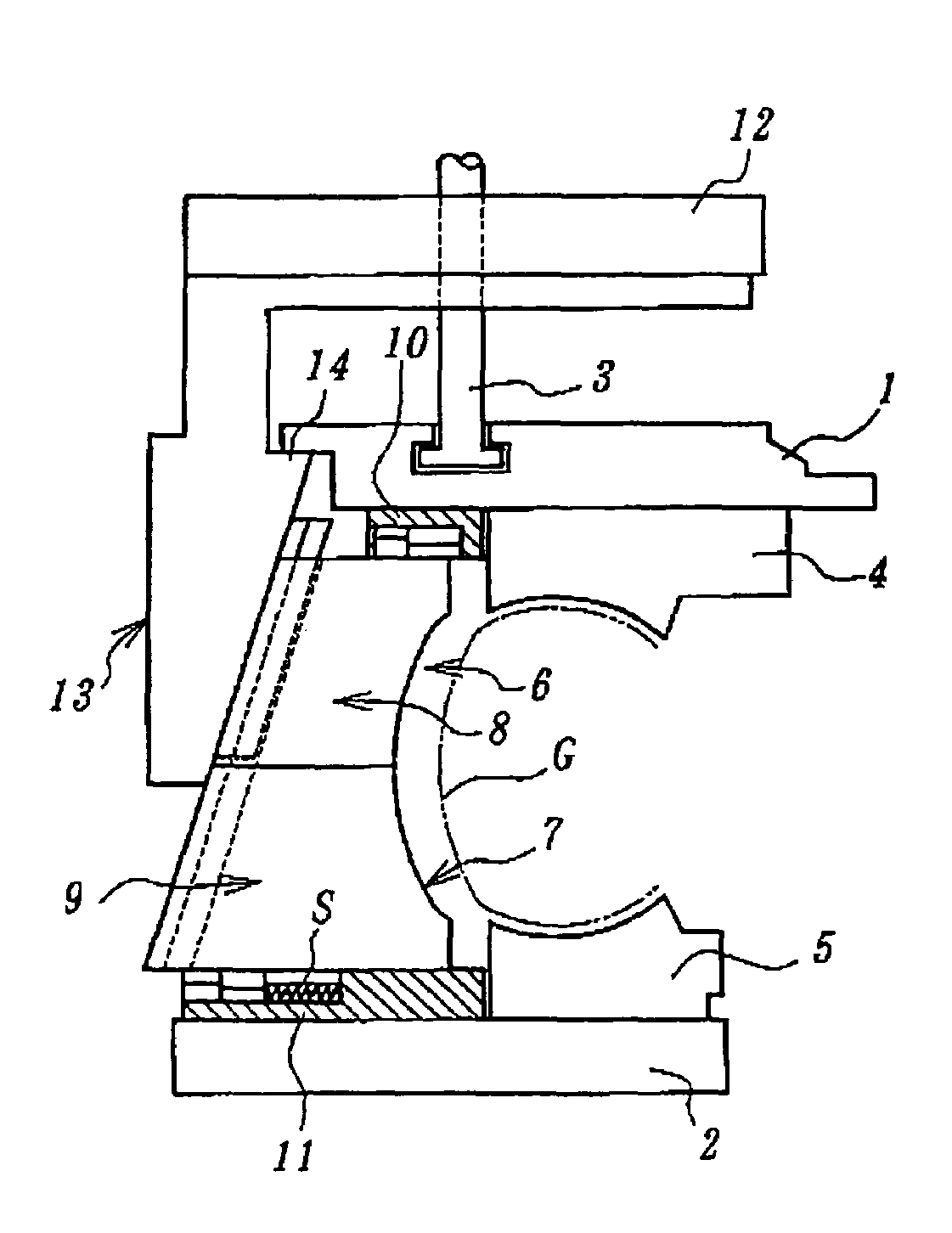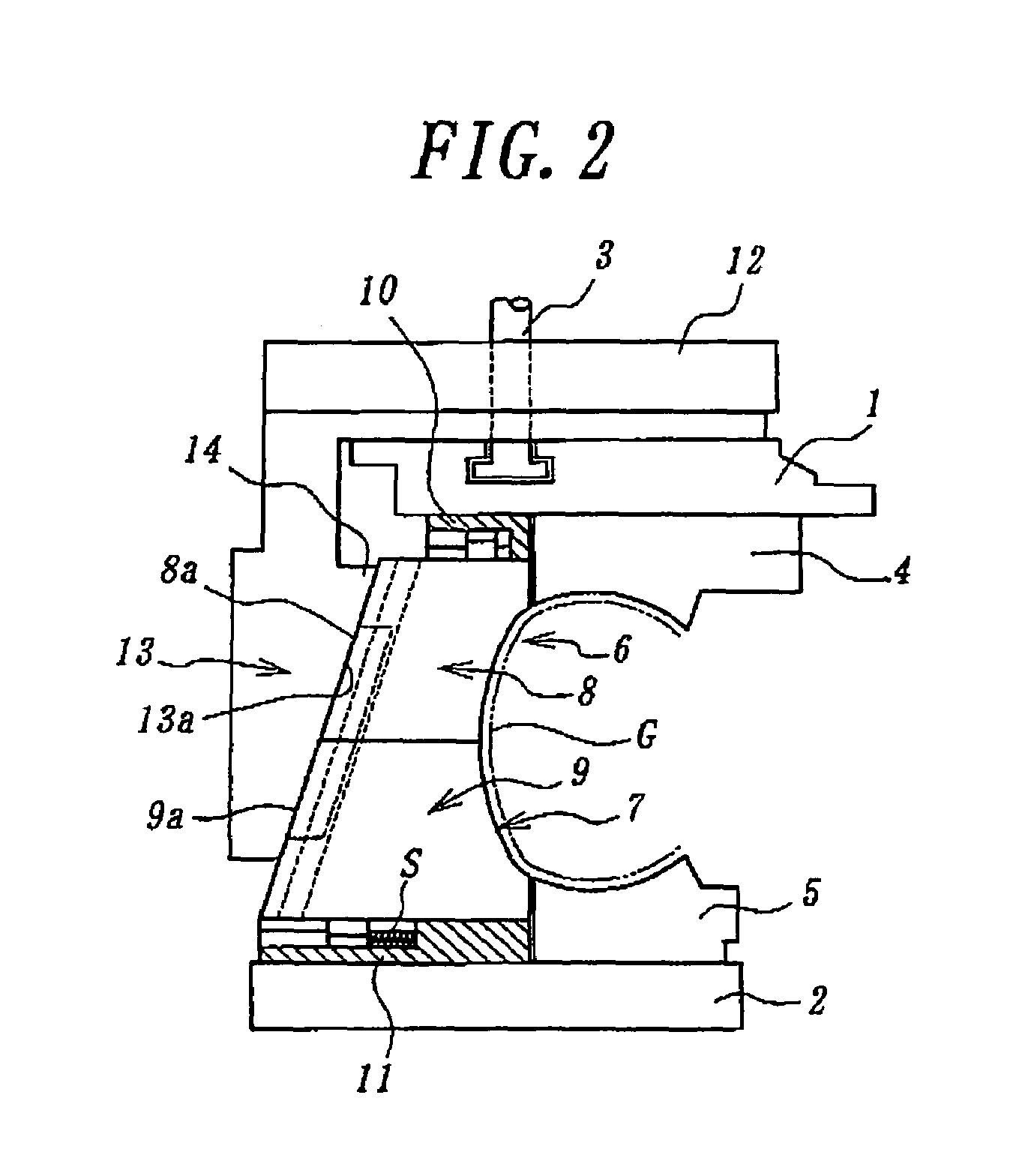Vulcanizing mold for pneumatic tires
a technology of pneumatic tires and molds, which is applied in the field of vulcanizing molds and vulcanizing methods of pneumatic tires, can solve the problems of uneven rubber material flow, defect formation in the tread land region, nicks and/or cracks, etc., and achieve the effect of preventing reducing the flow of rubber material, and free from unevenness
- Summary
- Abstract
- Description
- Claims
- Application Information
AI Technical Summary
Benefits of technology
Problems solved by technology
Method used
Image
Examples
Embodiment Construction
[0026]The present invention will be further described hereinafter with reference to a preferred embodiment shown in the accompanying drawings.
[0027]FIG. 2 is a longitudinal sectional view of an essential part of an embodiment of the present invention, wherein reference numerals 1 and 2 designate upper base plate and lower base plate, respectively. Here, the upper base plate 1 can be displaced vertically upwards and downwards relative to the lower base plate 2 also acting as a lower platen, under the operation of a cylinder rod 3 of a cylinder device (not shown).
[0028]Upper and lower sidewall mold members 4, 5 which contribute to the formation of the outer surfaces of tire sidewall portions are provided by directly fixing them to the upper and lower base plates 1, 2, respectively. There are also provided upper and lower tread mold members 6, 7 which contribute to the formation of the tire tread surface, on the outer peripheral sides of the sidewall mold members 4, 5, respectively. He...
PUM
| Property | Measurement | Unit |
|---|---|---|
| size | aaaaa | aaaaa |
| shearing forces | aaaaa | aaaaa |
| diameter | aaaaa | aaaaa |
Abstract
Description
Claims
Application Information
 Login to View More
Login to View More - R&D
- Intellectual Property
- Life Sciences
- Materials
- Tech Scout
- Unparalleled Data Quality
- Higher Quality Content
- 60% Fewer Hallucinations
Browse by: Latest US Patents, China's latest patents, Technical Efficacy Thesaurus, Application Domain, Technology Topic, Popular Technical Reports.
© 2025 PatSnap. All rights reserved.Legal|Privacy policy|Modern Slavery Act Transparency Statement|Sitemap|About US| Contact US: help@patsnap.com



